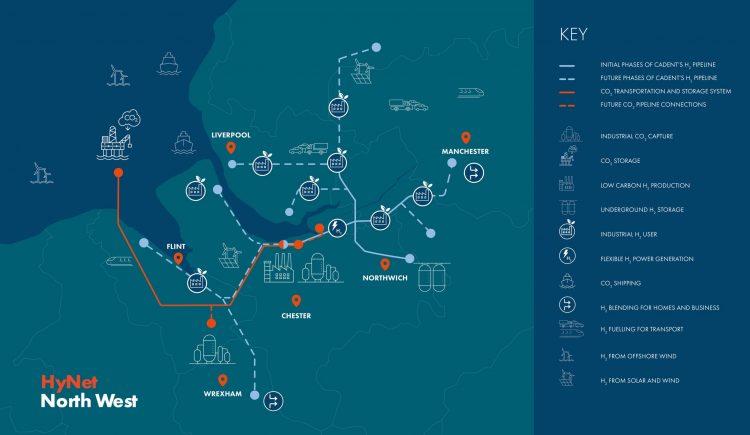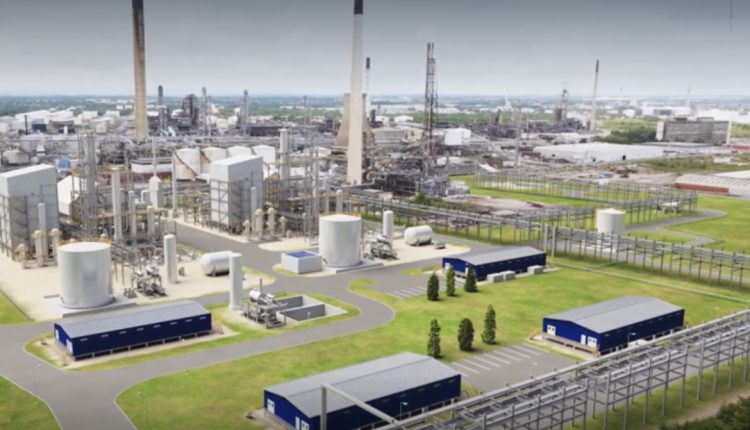Council planners are set to give the go-ahead this week for a £2bn hydrogen production facility and carbon capture plant close to the River Mersey. Tony McDonough reports

A £2bn hydrogen production facility and carbon capture plant close to the River Mersey is set to be given the green light by council planners.
Councillors on the planning committee at Cheshire West and Cheshire Council will meet on Tuesday, January 9, to discuss the development which is located at the giant Stanlow oil refinery in Ellesmere Port. Officers are recommending approval.
LBN revealed in September that engineering and design work had started on the project. It will eventually supply up to 1,000MW of hydrogen to industrial giants such as Pilkington and Tata Chemicals.
EET Hydrogen (formerly Vertex Hydrogen), a joint venture between Essar Oil UK, owner of the refinery, and low carbon energy firm Progressive Energy, is behind the proposal. It forms part of the wider HyNet hydrogen project.
Hydrogen will be produced at Stanlow by burning natural gas and piped to industrial customers across the North West. This method would usually produce significant carbon emissions, contributing to global warming and climate change.
However, HyNet’s plan is to invest in carbon capture and storage (CCS). Once captured the carbon will be piped to depleted gas fields under Liverpool Bay where it will be stored indefinitely.
CCS is a controversial technology. For the process to be viable it has to successfully capture and store between 90% and 95% of the carbon. This has never been achieved on the scale proposed by HyNet anywhere in the world.
According to the planning documents EET is looking to capture up to 97% of the CO2 produced by the hydrogen plant.
Located on a 71-acre site in the south-east quadrant of the Stanlow refinery, the developer comprises two phases. HPP1 will create infrastructure to enable a hydrogen production capacity of up to 350MW.
HPP2 will include an additional hydrogen process area and associated plant increasing the production capacity of the HPP three-fold, by a further 700MW.
EET Hydrogen has an ambition to deliver around 4GW of low carbon hydrogen by 2030, around 40% of the UK Government’s national target. It secured funding for the project from the Government in March.
It had originally hoped to have the Cheshire plant operational in 2025 but LBN reported in March it had been pushed back to 2026. Hydrogen produced in project phase 1 is proposed to be utilised locally by the refinery as well as by nearby industries.

This planning application is ‘hybrid’ in that it seeks both full and outline planning permission for different components of the development. Full planning permission is sought for the majority of the project phase one infrastructure.
Outline planning permission (with all matters reserved) is sought for the residual phase one infrastructure and all of the project phase two infrastructure.
Planning officers are recommending approval for the plant on condition it is operational within three years. It will have a projected lifespan of 25 years.
There remain big question marks over the project and whether it will live up to its promise to make a real contribution to the UK’s net zero targets.
Hydrogen is the most abundant element in the universe and at the point of use it is emissions-free. But to obtain energy from hydrogen we first have to separate it from other elements in fossil fuels or water. There are a number of ways of doing this.
So-called grey hydrogen is hydrogen produced using fossil fuels, as above, but the resultant carbon is released into the atmosphere contributing to global warming and climate change.
At the other end of the scale is green hydrogen. This is produced by running electricity from renewable sources such as wind or solar through a machine called an electrolyser. It separates the hydrogen from water molecules.
READ MORE: Essar Oil UK returns to profit as revenues top £9bn
This is by far the best way to produce hydrogen in terms of cutting carbon emissions. However, green hydrogen is currently expensive and not yet at the point where it can be sufficiently scaled up.
HyNet has chosen to produce what is called blue hydrogen which employs CCS. It adds it is future-proofing the infrastructure to eventually pivot towards green hydrogen.
HyNet is investing in a number of smaller scale green hydrogen projects. It will utilise electricity from the Frodsham Wind Farm close to the Mersey Estuary.

